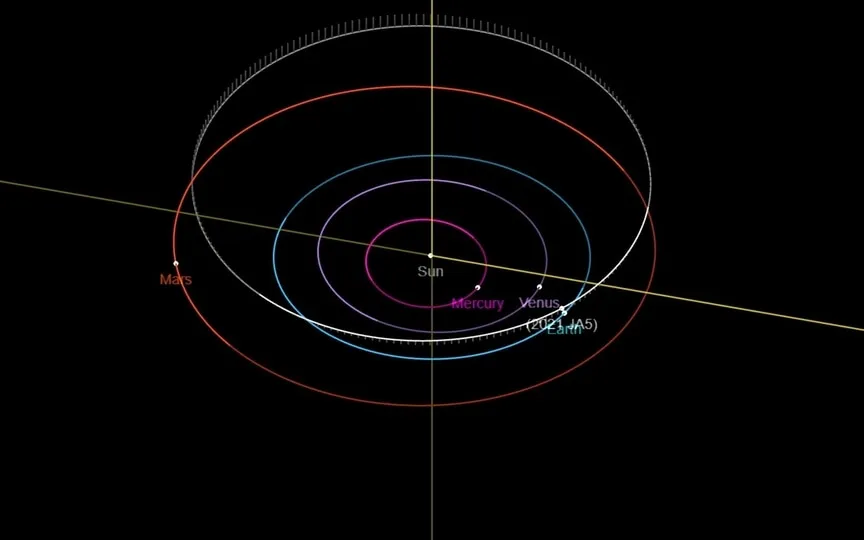NASA Announces Upcoming Close Encounter with 59-Foot Apollo Group Asteroid
NASA has released information regarding an asteroid that is anticipated to pass by Earth at a relatively short distance. Known as Asteroid 2021 JA5, this celestial object is currently heading towards our planet and will reach its closest proximity on September 6. The detection of this cosmic rock was made by NASA’s Defense Coordination Office (PDCO), an entity tasked with observing the heavens and monitoring different Near-Earth Objects (NEOs).
It speeds toward the planet at a blistering speed of 39,070 kilometers per hour and passes the planet at a distance of about 5.1 million kilometers, putting it in the Near Earth Object (NEO) category.
Despite the close approach, the asteroid is not dangerous due to its apparent small size. According to NASA, it is estimated to be about 59 feet wide, making it almost the size of a house. However, there is still cause for concern when a similar 59-foot-wide asteroid exploded over the city of Chelyabinsk, Russia in 2013, damaging more than 7,000 buildings and injuring nearly 1,400 people.
The space agency has also revealed that Asteroid 2021 JA5 belongs to Apollo’s group of Near-Earth Asteroids, which are extraterrestrial space rocks with semi-major axes larger than Earth’s. These asteroids are named after the huge 1862 Apollo asteroid discovered by German astronomer Karl Reinmuth in the 1930s.
The largest asteroid collision of all time
Asteroids often fly close to Earth without ever hitting the surface. However, the priority is for these space rocks to hit the Earth. The largest-ever asteroid impact with Earth occurred more than 2 billion years ago, resulting in the 300-kilometer-wide Vredefort crater near Johannesburg, South Africa.
However, a new discovery in Australia may put this asteroid impact to shame. Scientists at the University of New South Wales (UNSW) have now discovered the largest asteroid crater ever to hit the planet, located beneath the surface in New South Wales, Australia, according to research published in the journal Tectonophysics. The Deniliquin structure, which is nearly 520 kilometers wide, overlies the Vredefort asteroid crater, which was about 300 kilometers wide.
According to earth and paleoclimatologist Andrew Glikson, this effect may have occurred during the Late Ordovician mass extinction, which occurred about 450 million years ago and wiped out nearly 85 percent of Earth’s species at the time. This event is also called the first of the “Big 5” mass extinction events in history.




